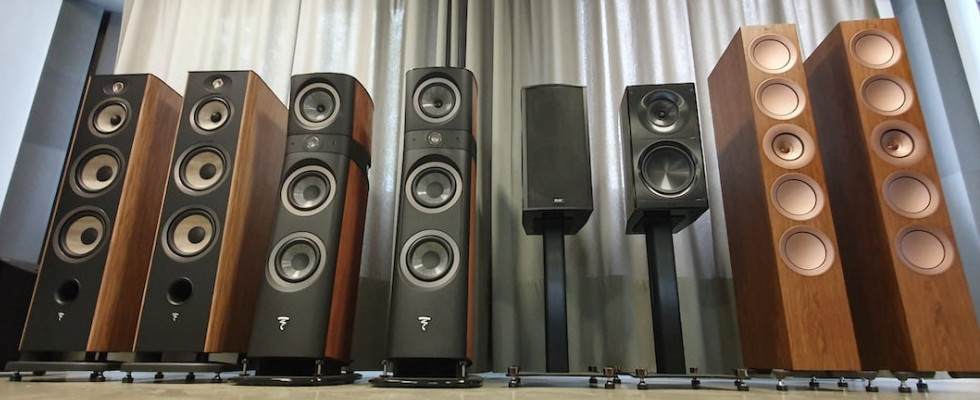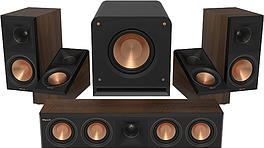 Introduction to Home Theater Systems
Introduction to Home Theater Systems
A home theater system is a setup that aims to recreate the experience of watching a movie in a commercial theater within the comfort of your own home. It typically consists of a combination of audio and video components that work together to provide an immersive and high-quality viewing experience.
There are several benefits to having a home theater system. Firstly, it allows you to enjoy movies, TV shows, and other forms of entertainment in the best possible way. The audio and video quality of a home theater system is often far superior to that of a regular TV and soundbar setup, providing a more immersive and engaging experience. Additionally, having a home theater system allows you to customize your viewing experience to your preferences, whether it’s adjusting the volume, choosing the aspect ratio, or even adding special effects like surround sound.
Before buying a home theater system, there are several factors to consider. Firstly, you need to determine your budget and what you are willing to spend on the system. This will help you narrow down your options and make more informed decisions. Secondly, you need to consider the size and layout of the room where you plan to set up your home theater system. This will affect the choice of components, such as the screen size and speaker placement. Lastly, you should also think about the future-proofing of your system. Technology is constantly evolving, so it’s important to choose components that can be easily upgraded or replaced in the future.
Understanding the Components of a Home Theater System
A home theater system consists of several components that work together to provide an immersive viewing experience. The audio components include speakers, amplifiers, and receivers, while the video components include a screen or projector and a media player.
When it comes to audio components, there are several types of speakers to choose from, including floor-standing speakers, bookshelf speakers, and in-wall or in-ceiling speakers. The choice of speakers will depend on the size of your room and your personal preferences. Amplifiers and receivers are responsible for powering and processing the audio signals, respectively. They help to enhance the sound quality and provide control over the audio settings.
For video components, you have the option of choosing between a screen or a projector. Screens come in various types, such as flat-panel TVs, motorized screens, and fixed-frame screens. The choice of screen will depend on factors such as the size of your room and your budget. Projectors, on the other hand, offer a larger screen size and can provide a more immersive viewing experience. They come in different types, such as LCD, DLP, LED, Laser and LCoS projectors.
Cables and connectors are also an important part of a home theater system. They are responsible for transmitting audio and video signals between the components. HDMI cables are commonly used for this purpose, as they can carry both audio and  video signals in high definition. Other types of cables and connectors include optical cables, RCA cables, and speaker wires.
video signals in high definition. Other types of cables and connectors include optical cables, RCA cables, and speaker wires.
Control devices are used to operate and control the various components of a home theater system. This includes remote controls, universal remotes, and smartphone apps. These devices allow you to adjust the volume, change the settings, and switch between different sources or inputs.
Choosing the Right Screen for Your Home Theater
The screen is one of the most important components of a home theater system, as it is responsible for displaying the video content. There are several factors to consider when choosing the right screen for your home theater.
Firstly, you need to consider the type of screen that best suits your needs. Flat-panel TVs are a popular choice for smaller rooms or if you prefer a more compact setup. They come in various sizes and resolutions, such as Full HD (1080p) or 4K Ultra HD. Motorized screens are another option, which can be rolled up or down when not in use. They are ideal for dedicated home theater rooms or if you want a more cinematic experience. Fixed-frame screens are a more permanent solution, as they are mounted on the wall and provide a flat and tensioned surface for optimal image quality.
Screen size and aspect ratio are also important considerations. The size of the screen should be proportional to the viewing distance and the size of the room. A general rule of thumb is that the distance between the viewer and the screen should be about 1.5 to 2 times the diagonal screen size. The aspect ratio refers to the width and height of the screen. The most common aspect ratios are 16:9, which is ideal for watching movies and TV shows, and 2.35:1, which is used for widescreen movies.

The material of the screen also plays a role in the overall image quality. There are different types of screen materials, such as matte white, gray, and acoustically transparent. Matte white screens are the most common and provide a neutral color reproduction. Gray screens are designed to enhance contrast and black levels, making them ideal for rooms with ambient light. Acoustically transparent screens allow sound to pass through the screen, which is useful if you have speakers placed behind the screen.
Selecting the Best Projector for Your Home Theater
If you prefer a larger screen size and a more immersive viewing experience, a projector may be the right choice for your home theater system. There are several factors to consider when selecting the best projector for your needs.
Firstly, you need to consider the type of projector that best suits your needs. LCD projectors use liquid crystal displays to create the image, while DLP projectors use digital micromirror devices. LED and Laser Projector though usually more expensive and becoming very popular for their true image color and their longevity. LCoS projectors combine the technologies of LCD and DLP projectors to provide high-quality images with excellent color reproduction. LCoS projectors are extremely espensive and are built for large auditoriums, churches and other larger venues. The choice of projector will depend on factors such as your budget, the desired image quality, and the room conditions.
Resolution and brightness are also important considerations when choosing a projector. The resolution refers to the number of pixels that make up the image. The most common resolutions are HD (1280×720), Full HD (1920×1080), and 4K Ultra HD (3840×2160). The higher the resolution, the sharper and more detailed the image will be. Brightness is measured in lumens and determines how well the projector can produce a bright and vibrant image. The brightness required will depend on factors such as the ambient light in the room and the screen size.
Throw distance and lens shift are two other important factors to consider. The throw distance refers to the distance between the projector and the screen. It determines the size of the image and should be compatible with the size of your room. Lens shift allows you to adjust the position of the image vertically or horizontally without moving the projector itself. This is useful if you need to mount the projector off-center or if you want to avoid keystone distortion.
Picking the Right Sound System for Your Home Theater
The sound system is an essential component of a home theater system, as it is responsible for providing an immersive and high-quality audio experience. There are several factors to consider when picking the right sound system for your needs.
Firstly, you need to consider the type of speakers that best suit your needs. There are several types of speakers to choose from, including floor-standing speakers, bookshelf speakers, in-wall or in-ceiling speakers, and subwoofers. Floor-standing speakers are large and provide a full-range sound, while bookshelf speakers are smaller and can be placed on a shelf or stand. In-wall or in-ceiling speakers are mounted directly into the wall or ceiling, providing a clean and unobtrusive look. Subwoofers are responsible for reproducing low-frequency sounds, such as explosions and deep bass.
Speaker placement is also important for achieving optimal sound quality. The placement of the speakers will depend on factors such as the size and shape of the room, the type of speakers, and personal preferences. The front speakers should be placed at ear level and equidistant from the listener. The center speaker should be placed above or below the screen, while the surround speakers should be placed to the sides or behind the listener. The subwoofer can be placed anywhere in  the room, as low-frequency sounds are non-directional.
the room, as low-frequency sounds are non-directional.
Surround sound formats are another important consideration when picking a sound system. Surround sound formats provide a more immersive audio experience by using multiple speakers to create a three-dimensional sound field. The most common surround sound formats are 5.1, 7.1, and Dolby Atmos. 5.1 refers to five speakers (front left, front center, front right, surround left, surround right) and one subwoofer. 7.1 adds two additional surround speakers (surround back left, surround back right). Dolby Atmos adds overhead speakers or upward-firing speakers to create a more immersive sound experience.
Understanding the Importance of Room Acoustics
Room acoustics play a crucial role in the overall sound quality of a home theater system. The size and shape of the room, as well as the materials used in the construction, can affect how sound waves travel and interact with the environment.
The size and shape of the room can have a significant impact on the sound quality. A larger room with high ceilings will generally provide better acoustics, as it allows for more natural sound dispersion and less reflection. On the other hand, smaller rooms with low ceilings can result in more reflections and standing waves, which can negatively affect the sound quality. It’s important to choose a room that is suitable for a home theater setup and consider acoustic treatments to improve the sound quality.
Acoustic treatments are used to control the reflections and reverberations in a room. They can help to reduce echo, improve clarity, and enhance the overall sound quality. There are several types of acoustic treatments, including absorbers, diffusers, and bass traps. Absorbers are used to absorb sound waves and reduce reflections. They can be placed on the walls, ceiling, or floor. Diffusers are used to scatter sound waves and create a more even distribution of sound. They can be placed on the walls or ceiling. Bass traps are used to absorb low-frequency sounds and reduce standing waves. They can be placed in the corners of the room.
Soundproofing is another important consideration when it comes to room acoustics. Soundproofing helps to prevent sound from escaping the room and disturbing other areas of the house. It also helps to reduce external noise from entering the room and interfering with the sound quality. There are several methods of soundproofing, including adding insulation to the walls, ceiling, and floor, using soundproof curtains or blinds, and sealing any gaps or cracks in the room.
Setting Up Your Home Theater System
Setting up a home theater system can be a complex task, but with proper planning and organization, it can be a rewarding experience. Here are some tips and tricks to help you set up your home theater system:
1. Plan the layout: Before setting up your home theater system, take the time to plan the layout of the room. Consider factors such as the size and shape of the room, the location of windows and doors, and the placement of furniture. This will help you determine the best position for the screen, speakers, and seating.
2. Cable management: Proper cable management is essential for a clean and organized setup. Use cable ties or cable clips to secure the cables and prevent them from tangling or becoming a tripping hazard. Consider using cable channels or raceways to hide the cables and create a neater appearance.
3. Calibration and testing: Once you have set up your home theater system, it’s important to calibrate and test the audio and  video settings. Use a calibration disc or software to adjust the color, contrast, and brightness of the screen. Use a sound meter or an audio calibration tool to adjust the volume and balance of the speakers. Test the system with different types of content, such as movies, music, and video games, to ensure that everything is working properly.
video settings. Use a calibration disc or software to adjust the color, contrast, and brightness of the screen. Use a sound meter or an audio calibration tool to adjust the volume and balance of the speakers. Test the system with different types of content, such as movies, music, and video games, to ensure that everything is working properly.
Choosing the Right Furniture for Your Home Theater Room
The furniture you choose for your home theater can greatly enhance your viewing experience and add to the overall aesthetics of the room. Here are some factors to consider when choosing the right furniture for your home theater:
1. Seating options: Comfortable seating is essential for a home theater setup. Consider options such as recliners, sofas, or dedicated home theater seats. Look for seating that provides good lumbar support, adjustable headrests, and built-in cup holders or storage compartments. Consider the size of the room and the number of seats you need.
2. Lighting and decor: Lighting plays an important role in creating the right ambiance in a home theater. Consider installing dimmable lights or LED strips that can be controlled with a remote or smartphone app. This will allow you to adjust the lighting levels according to your preferences and the type of content you are watching. Decorative elements such as movie posters, wall art, and acoustic panels can also add a personal touch to your home theater.
3. Storage solutions: A home theater setup often requires additional storage space for media players, game consoles, DVDs, and other accessories. Consider furniture options that provide built-in storage compartments or shelves. This will help to keep the room organized and free from clutter.
Maintaining and Upgrading Your Home Theater System
Once you have set up your home theater system, it’s important to maintain and upgrade it regularly to ensure optimal performance and longevity. Here are some tips for maintaining and upgrading your home theater system:
1. Cleaning and maintenance: Regular cleaning and maintenance are essential for keeping your home theater system in good condition. Dust the components regularly using a soft cloth or a microfiber duster. Use compressed air or a vacuum cleaner with a brush attachment to remove dust from the vents and grilles. Clean the screen using a screen cleaning solution and a microfiber cloth. Check the cables and connectors for any signs of wear or damage and replace them if necessary.
2. Upgrading components: Technology is constantly evolving, so it’s important to keep up with the latest advancements and upgrade your components when necessary. Consider upgrading the screen or projector to a higher resolution or brightness level. Upgrade the speakers or receiver to a higher-quality model that provides better sound reproduction. Consider adding new features such as wireless connectivity or smart home integration.
3. Future-proofing your system: When purchasing new components, consider their compatibility with future technologies and formats. Look for components that support the latest audio and video formats, such as Dolby Atmos or HDR. Consider investing in a receiver or media player that supports wireless connectivity, such as Wi-Fi or Bluetooth, to ensure compatibility with future devices.
Conclusion: Enjoying Your Home Theater System to the Fullest.
At our house nightly movies are a fun part of our day. We each pick a movie in turn, Mom likes action movies, Dad likes any movie. I pick old black and whites, musicals, classics and new movies. Our daughters like family, comedy and even animation movies. So pull up a chair, make some popcorn or grab your favorite snack and enjoy a good movie.
I’m excited to have you as part of the community! I look forward to bringing you more exciting content in the future. In the meantime, please don’t hesitate to reach out if you have any further questions or comments. Here at Audio Video Adventures is where you can get all the latest in Projectors, Receivers, Speakers, and accessories as well as everything else you need for the ideal home theater experience.
I really enjoyed reading about why people would choose to purchase and install a Home Theater system, and then what needs to be installed for the best effects. The text gave me confidence that the author knew a lot about his subject, and could give guidance in the event of public queries.
A home theater system is more than just a luxury; it’s an investment in quality entertainment. It’s about creating an immersive experience that goes beyond just watching a movie. It’s about feeling like you’re part of the action, right there in the middle of it all. The visuals are crisp and clear on your high-definition screen, making every detail stand out. The sound system envelops you, making every explosion feel earth-shattering and every whispered conversation feel intimate. This is what a home theater system can offer.
Investing in a home theater system is investing in experiences. It’s about bringing the magic of cinema into your home and sharing it with your loved ones. It’s about creating memories that will last a lifetime. So why wait? Bring home the magic today with a home theater system. Lights, camera, action – let the show begin! 🍿🎥🎞️
Thank you for visiting Audio Video Adventures and please come back again. I will be continually adding more information on everything audi video.
I just learned so much from this article about home theatre systems. I am considering installing one in my own home. But first between a matte white and a grey screen material which one would you recommend for a room with very dim lighting?
Both matte white and grey screens have their unique advantages. Matte white screens are known for their ability to provide vibrant color reproduction and wide viewing angles. They are generally recommended for rooms with controlled lighting where ambient light can be minimized.
On the other hand, grey screens are known for their ability to enhance black levels, providing deeper contrast ratios especially in rooms with less-than-ideal light control. They can help deliver more defined blacks and richer colors in low-light conditions or rooms with ambient light.
Please come back again as Audio Video Adventures offers all the latest in Projectors, Receivers, Speakers, and accessories as well as everything else you need for the ideal home theater experience.
Gene
Cool looking dog, thanks so much for your guide when it comes to a home theater system along with how to set it up. There are many people that want this type of system but don’t know where to start or how to go about it, you have made it so easy to know what to do. Thanks for sharing.
I appreciate your kind words and am thrilled to hear that you found my guide helpful and easy to understand. Buying a home theater system can be a daunting task for many people. There are so many options available in the market, each with its own set of features and specifications. I wanted to demystify the process and provide clear, practical advice on how to choose the right system
I hope that this guide has not only helped you understand how to go about buying a home theater system but also inspired you to create an amazing entertainment space in your home. Remember, the key is not just about buying the most expensive or advanced system; it’s about finding the one that suits your needs, fits your budget, and enhances your overall viewing experience.
At
Audio Video Adventures we offer all the latest in Projectors,
Receivers, Speakers, and accessories as well as everything else you
need for the ideal home theater experience.
Gene
Wow. What an amazing website. It was very informative and well written with amazing photographs. You always loved this particular field so I’m not surprised at the depth and level of the expertise.. You will do amazing things.. Blessings. Marilyn
Thank you so much for your kind words and positive feedback. I am thrilled to hear that you found my website, and specifically the guide on “Lights, Camera, Action: How to Buy a Home Theater System,” both informative and visually appealing.
I put a lot of effort into ensuring that my content is not only well-researched and expertly written but also engaging and easy to understand. I believe that high-quality photographs can significantly enhance the reader’s experience, helping them visualize the products I’m discussing and making the process of buying a home theater system less daunting.
Your comment about the depth and level of expertise reflected in the content is particularly gratifying. As you rightly pointed out, I have a deep passion for this field. I believe that this passion shines through in my work, enabling me to provide my readers with valuable insights that they might not find elsewhere.
I am committed to maintaining the high standards that you’ve come to expect from me. Your encouragement will undoubtedly fuel my efforts as I continue to strive for excellence in all that I do.